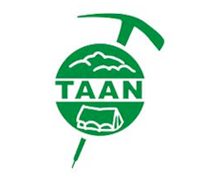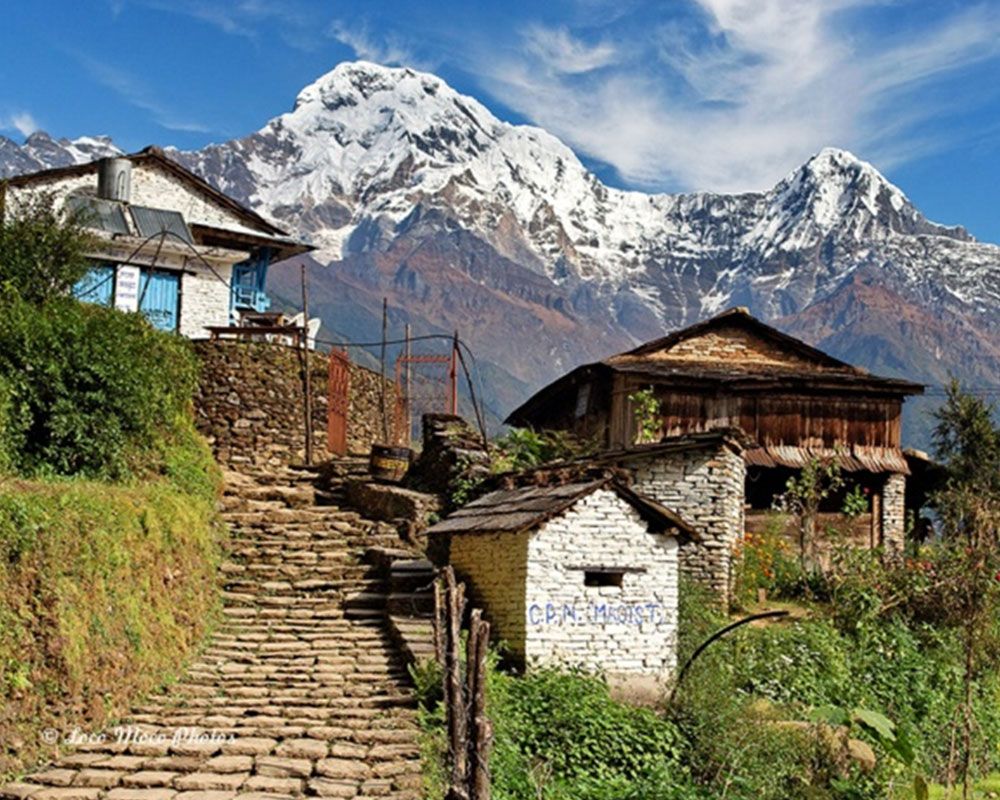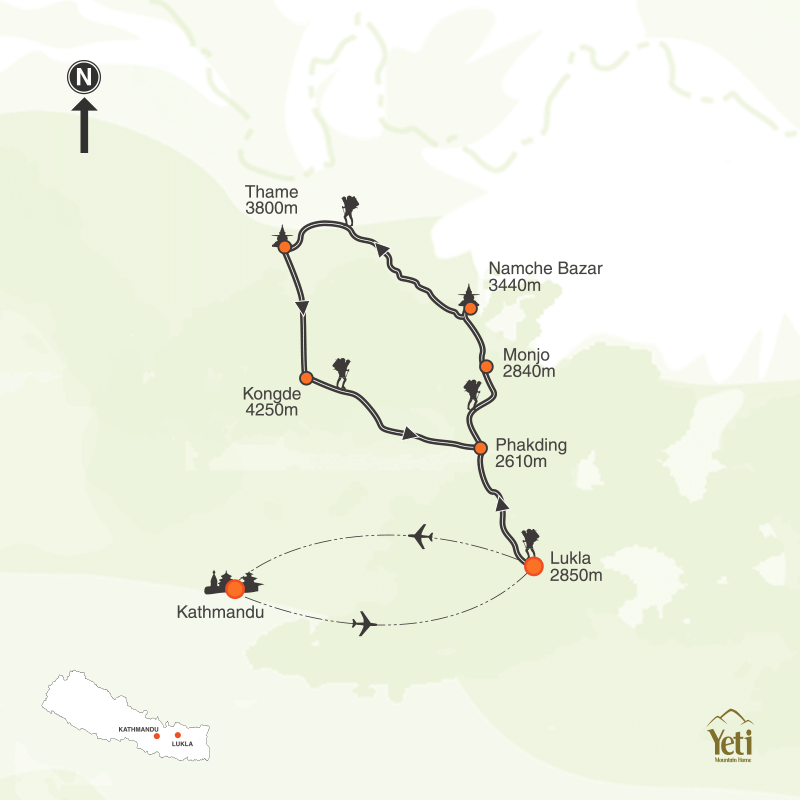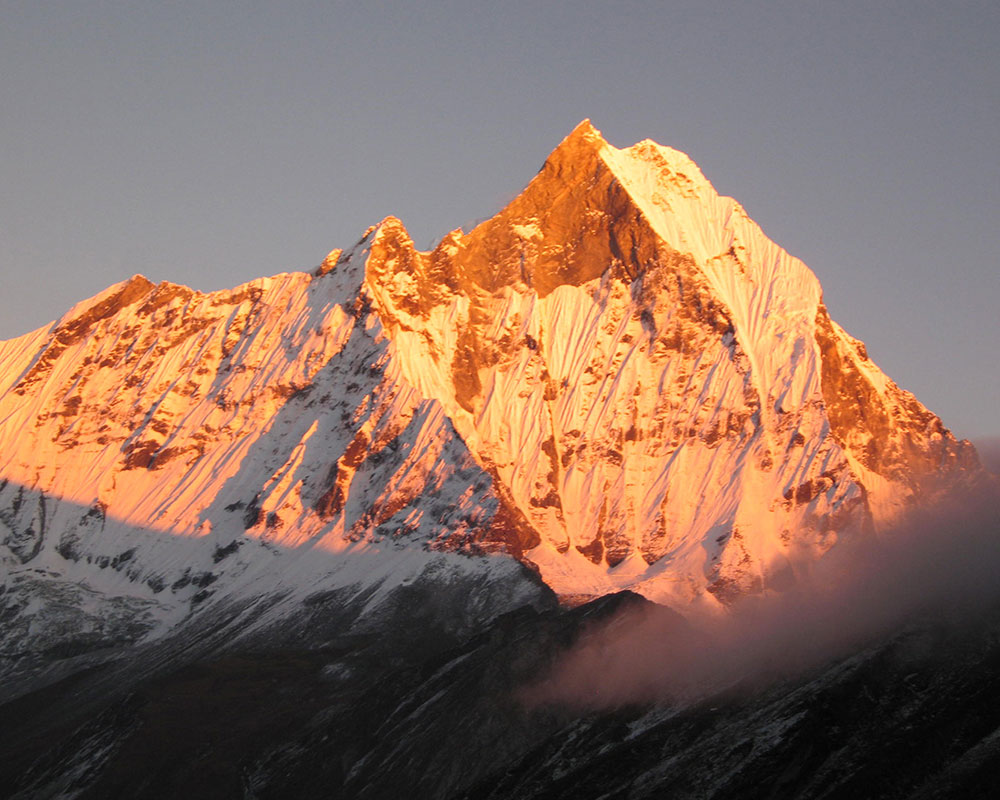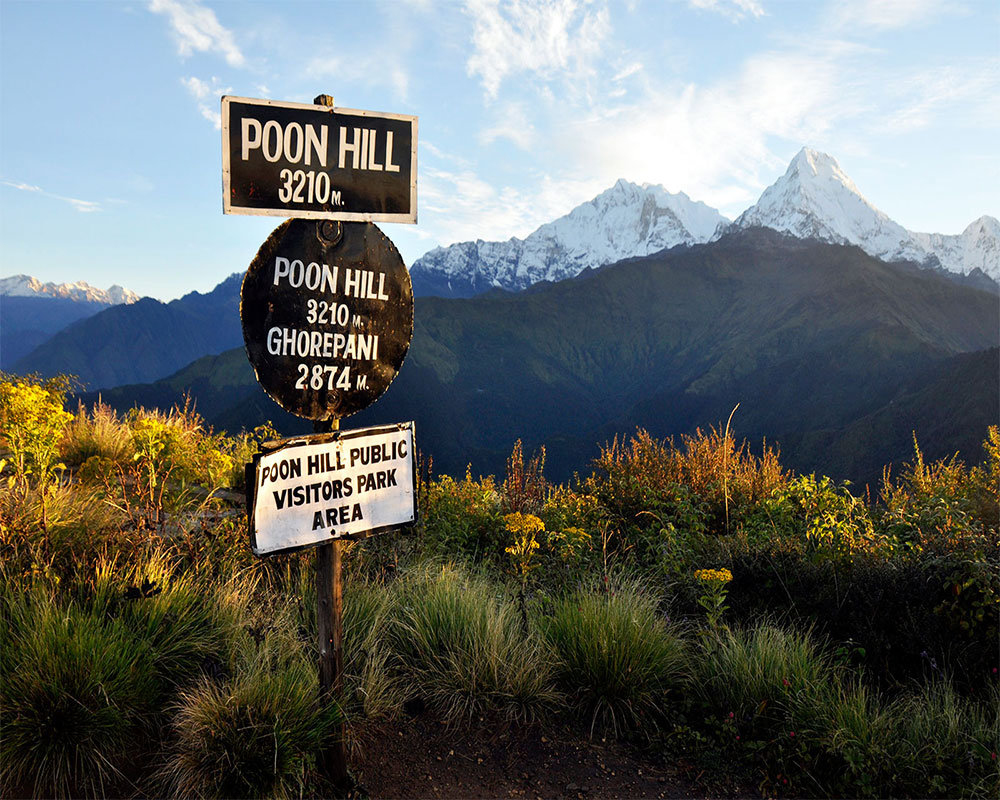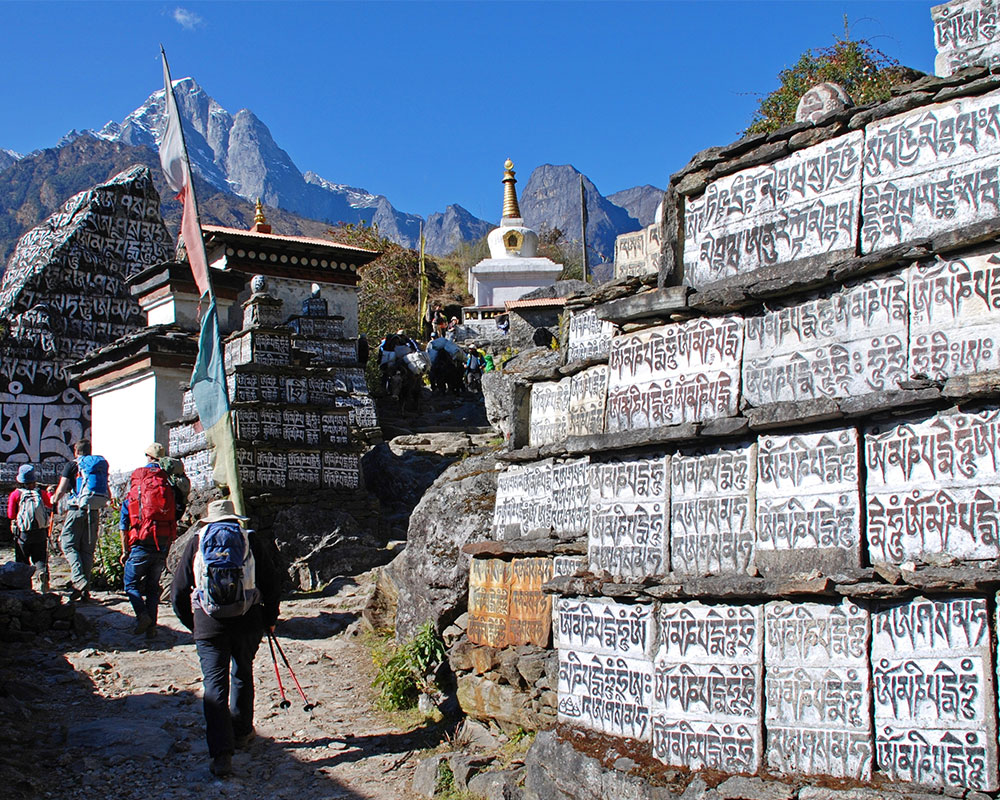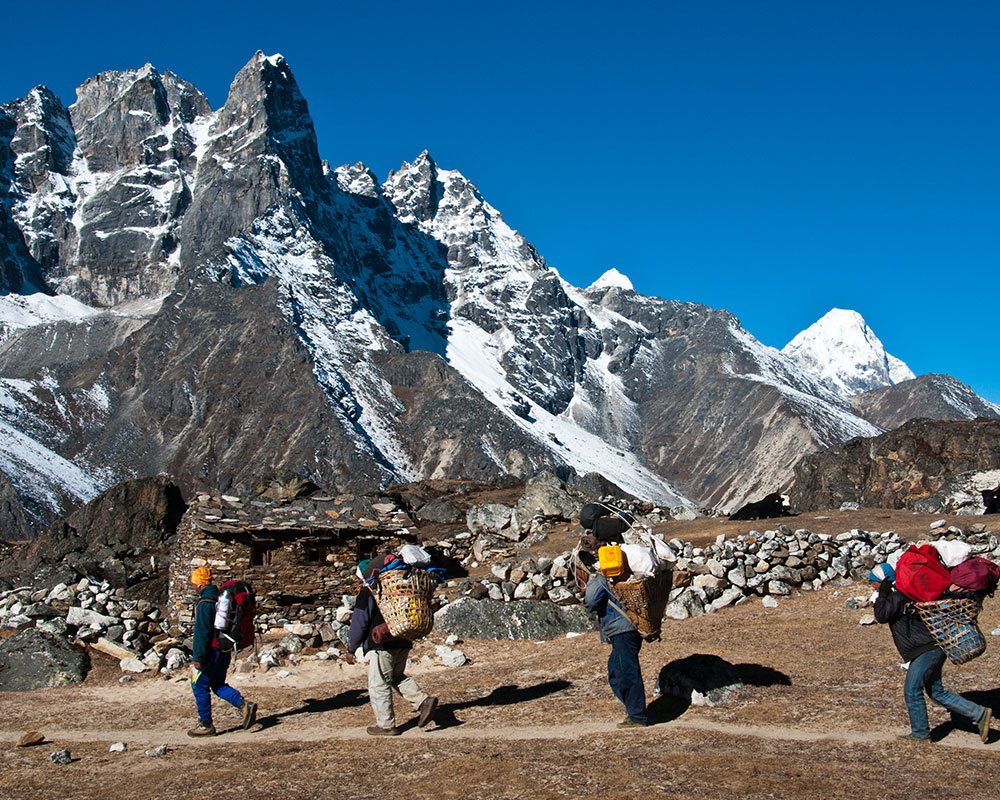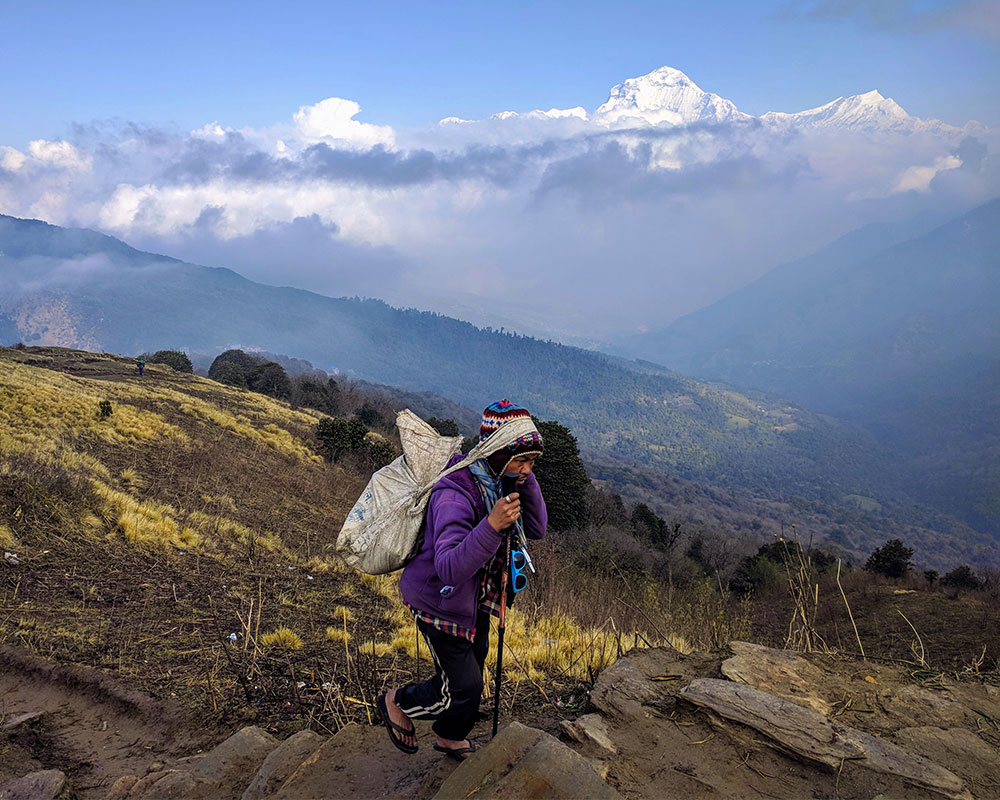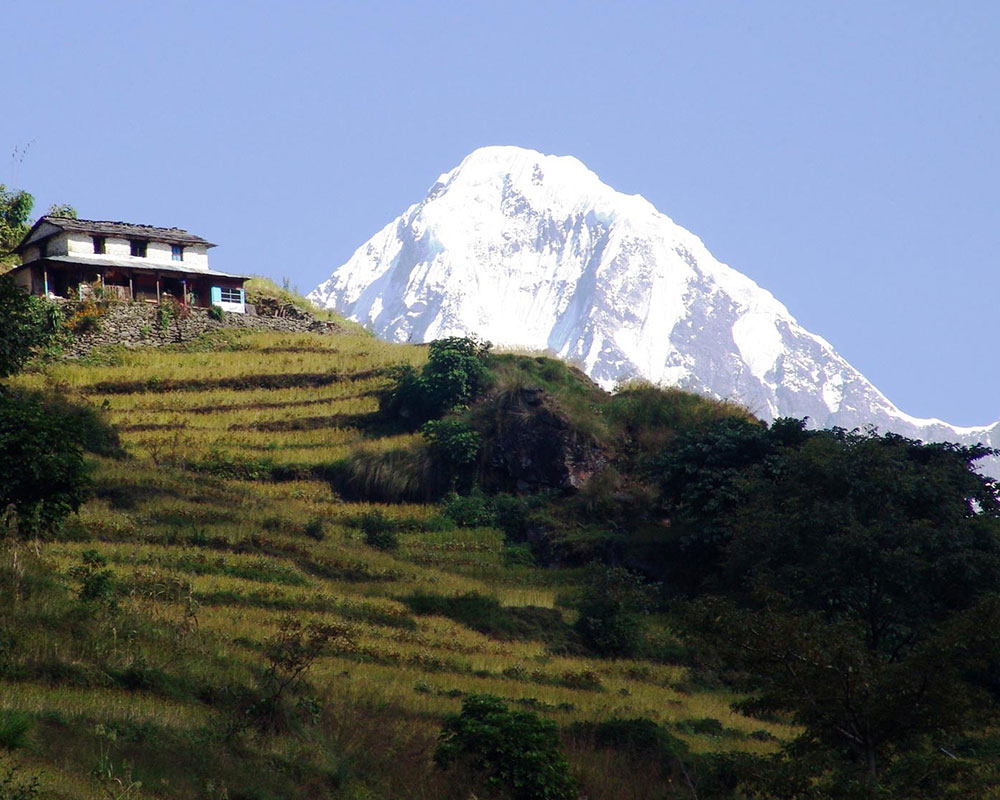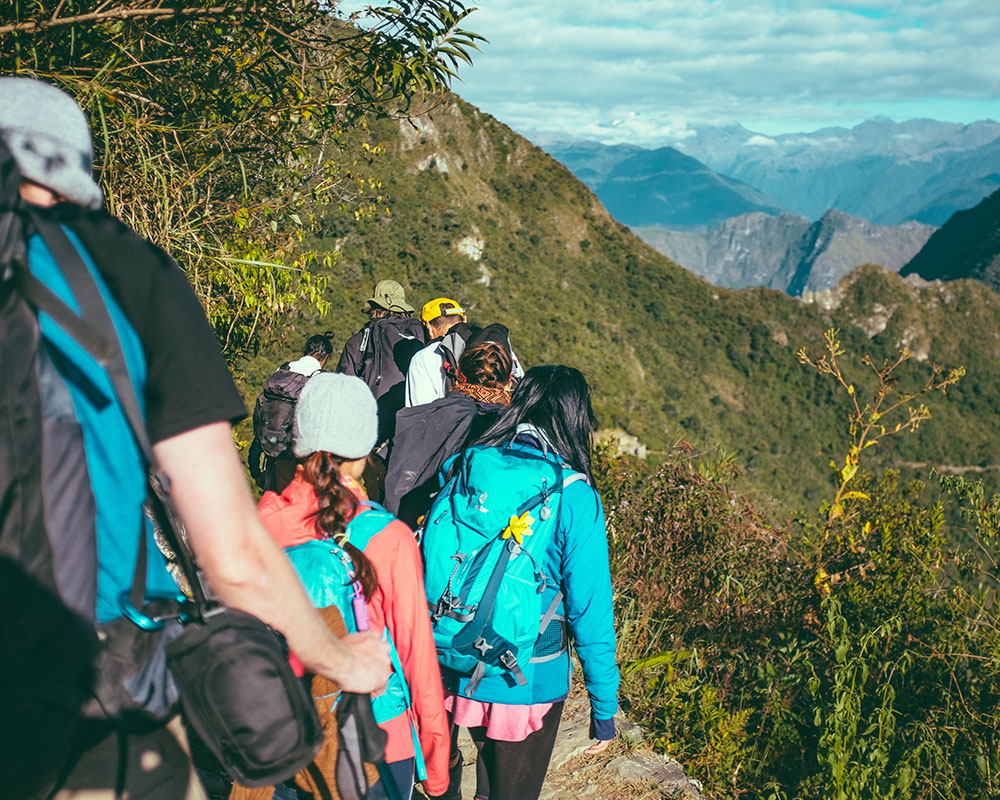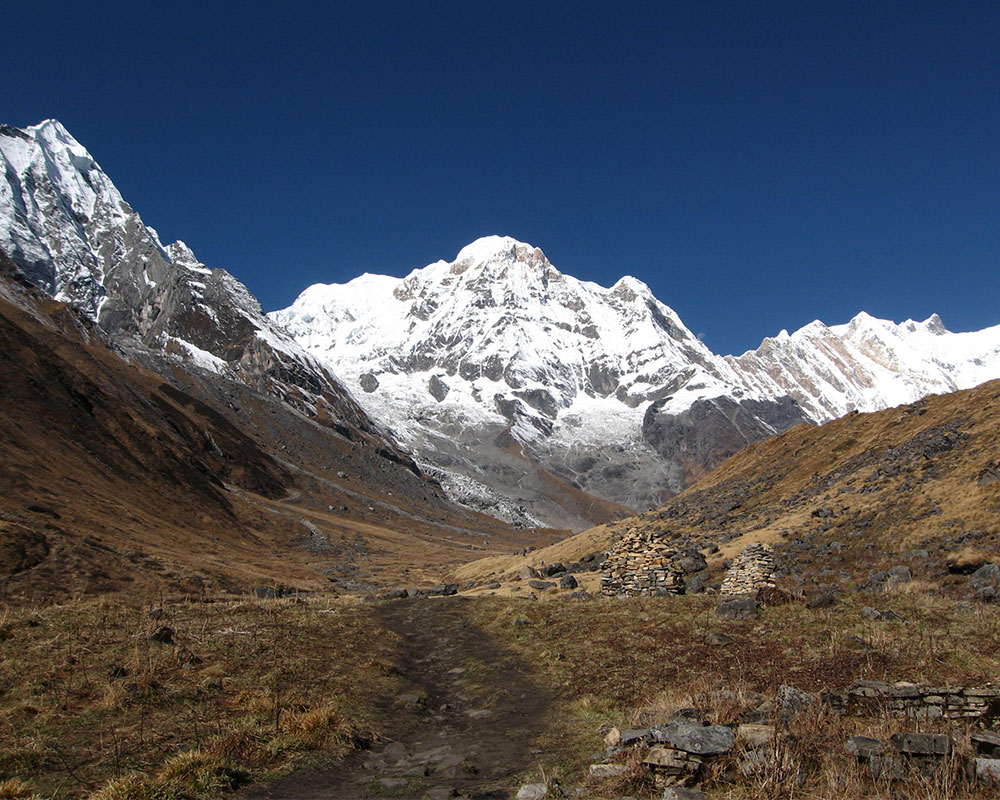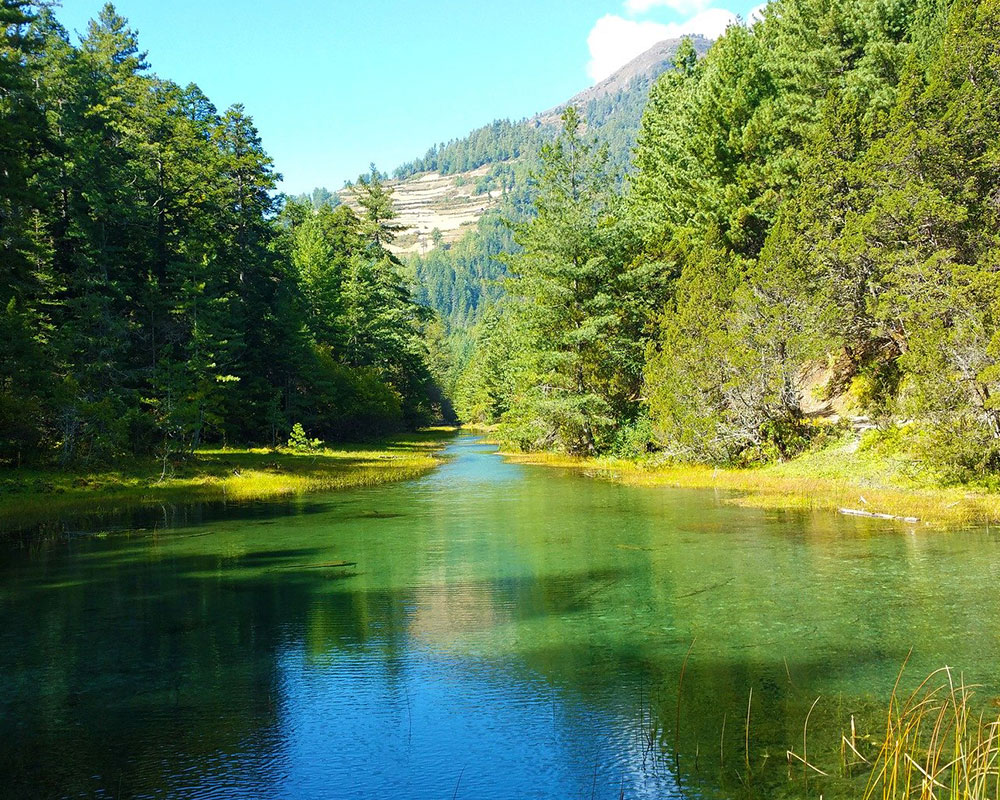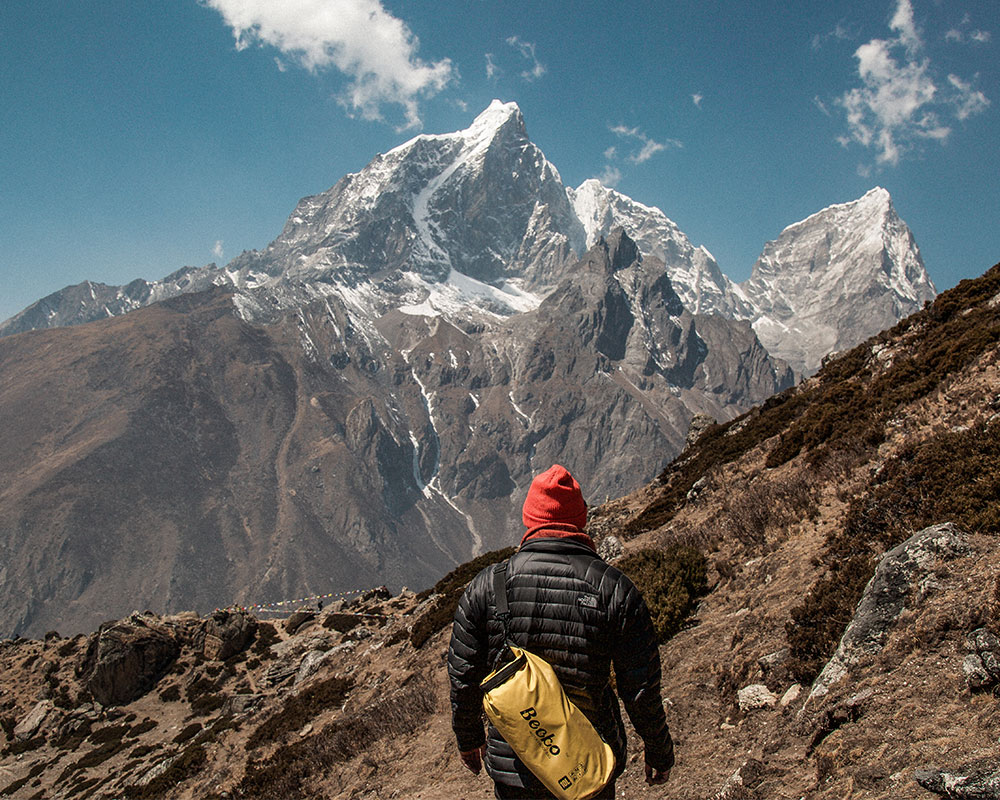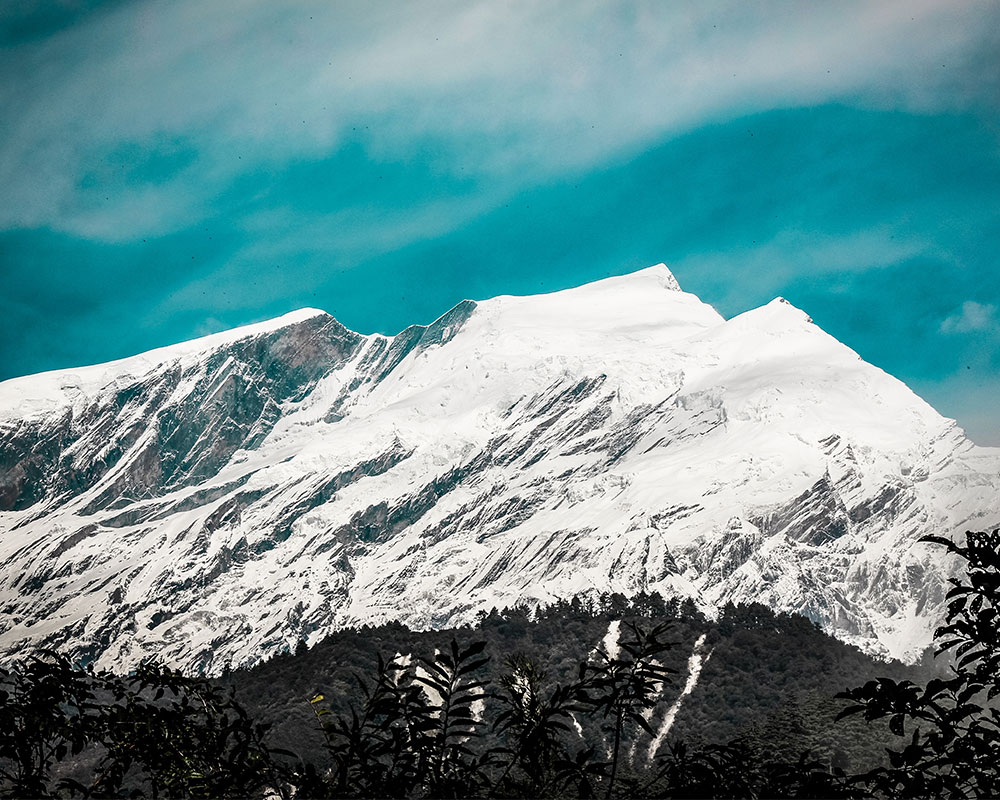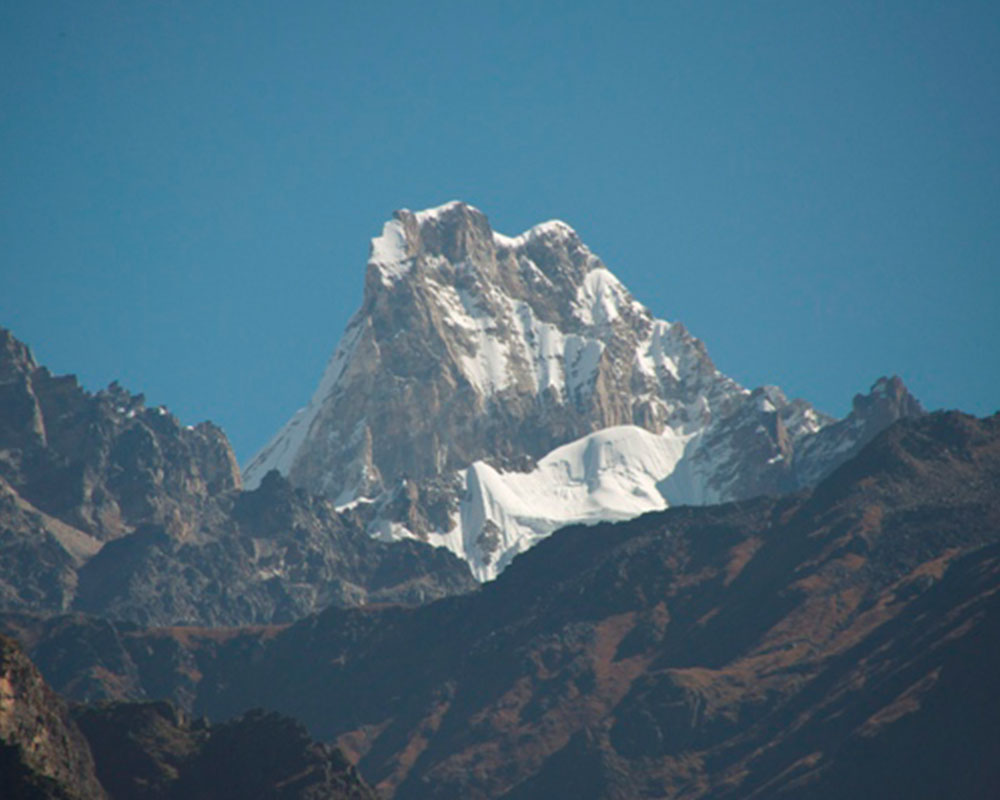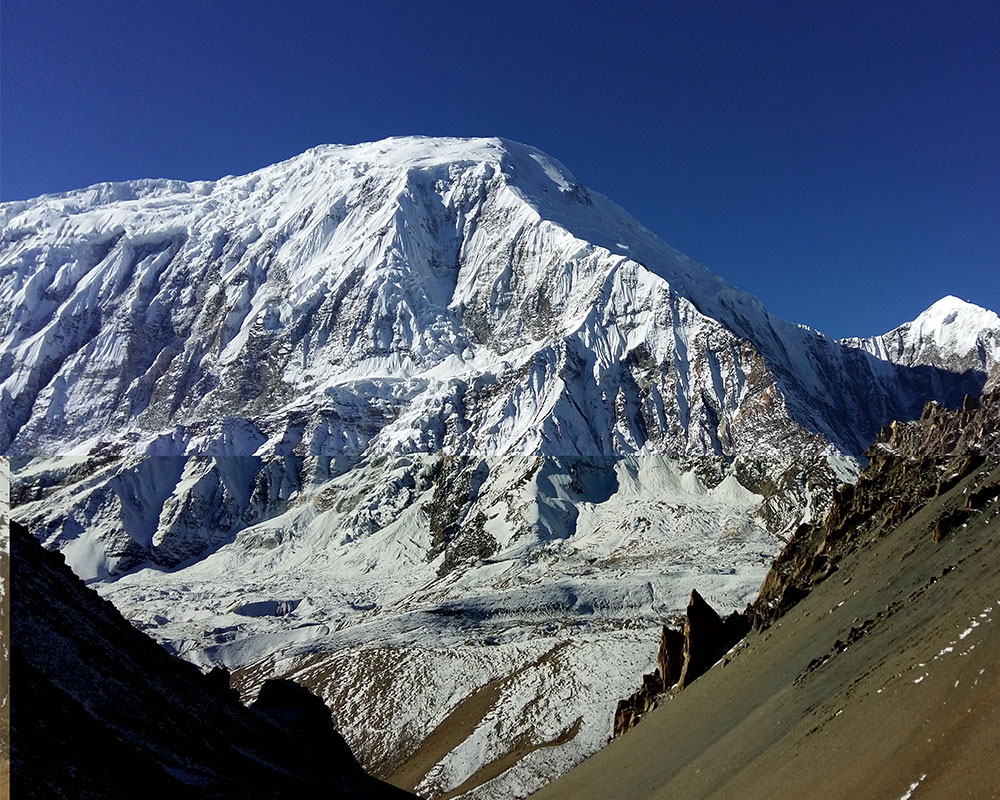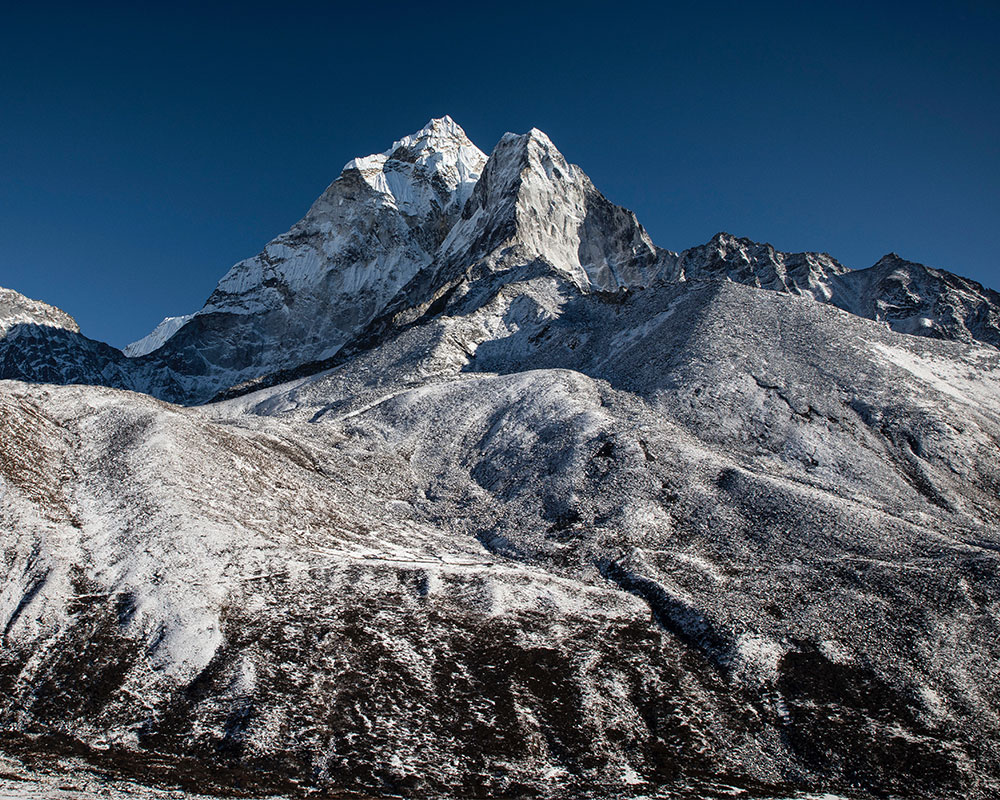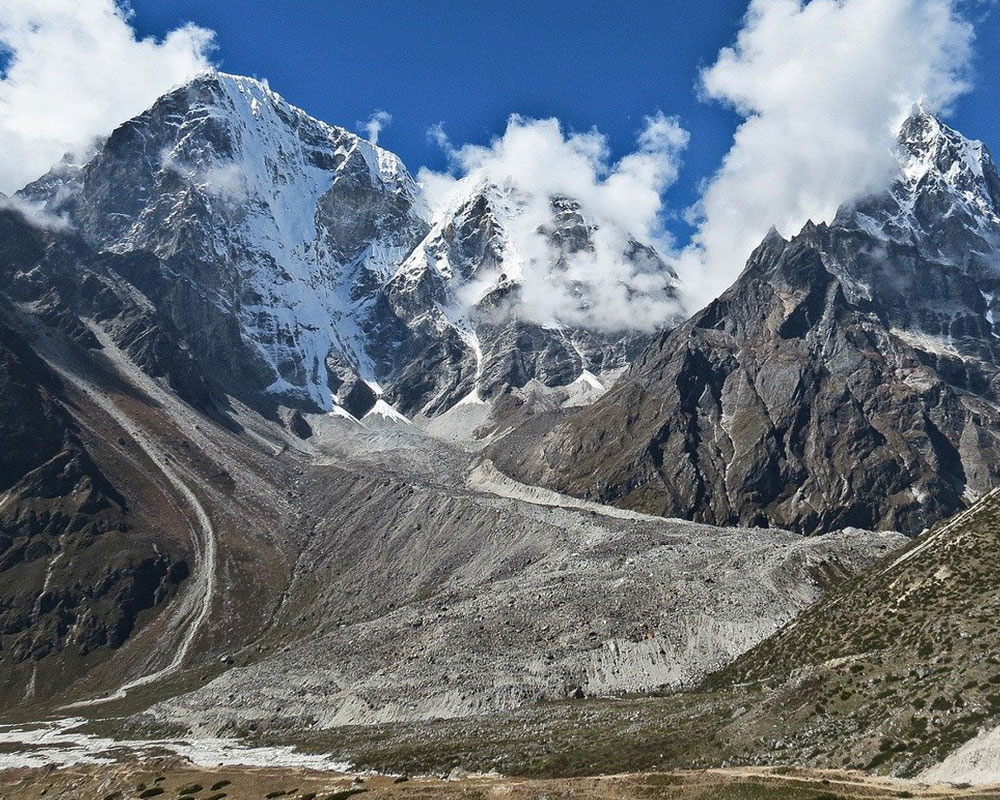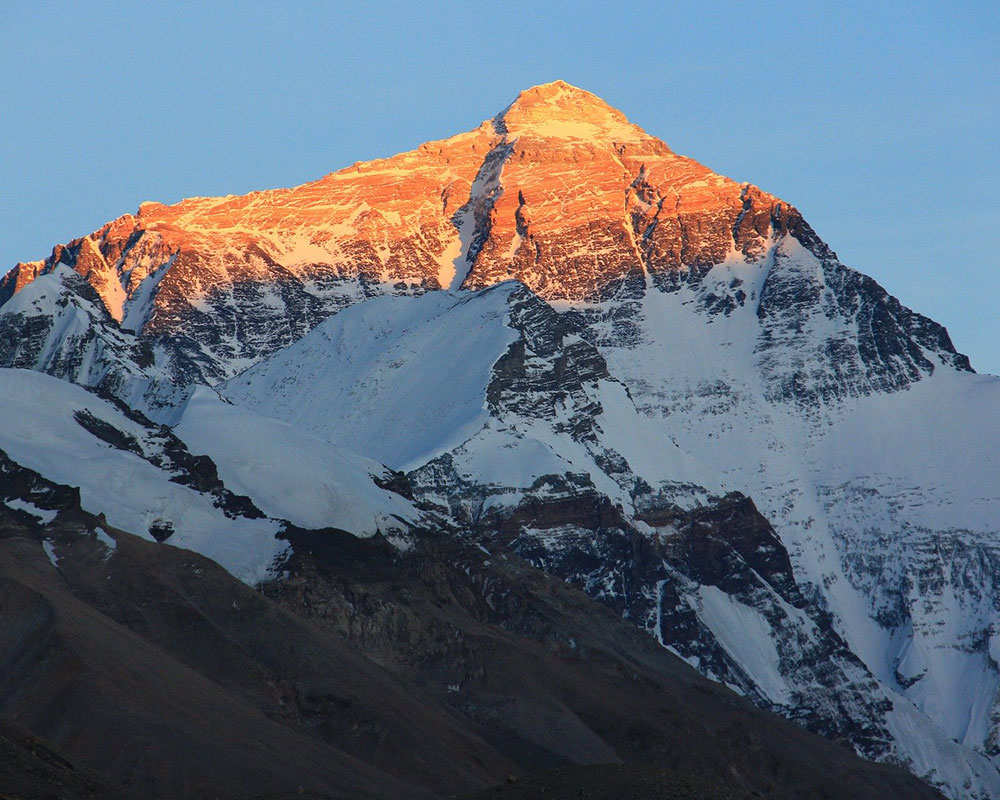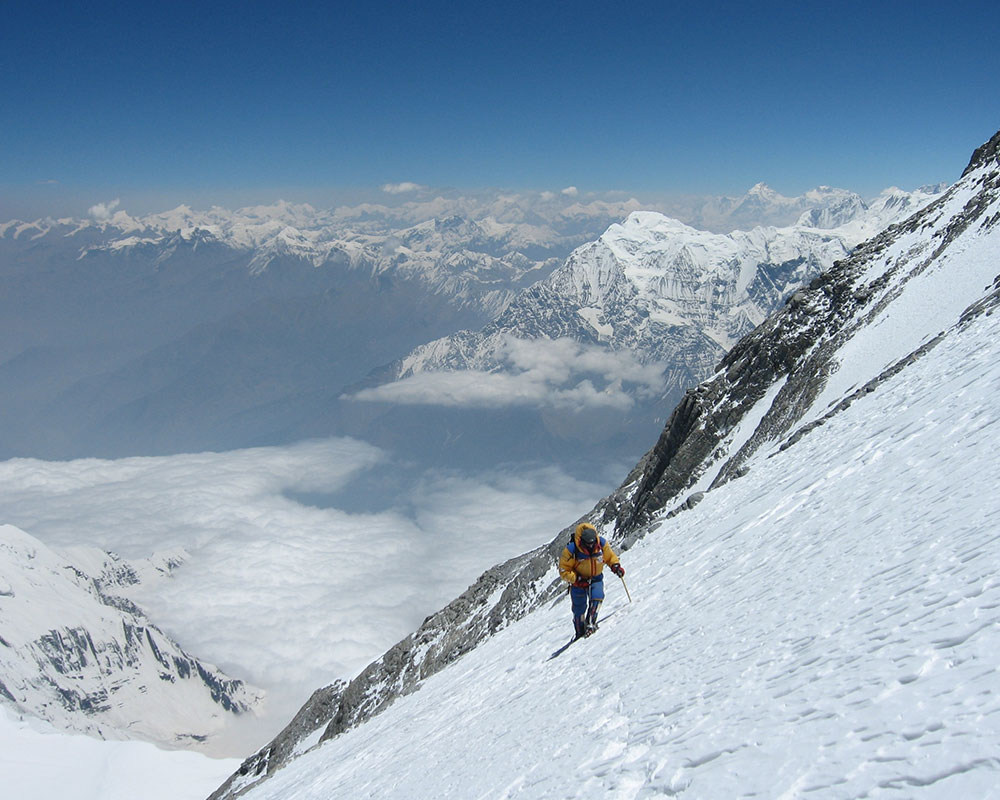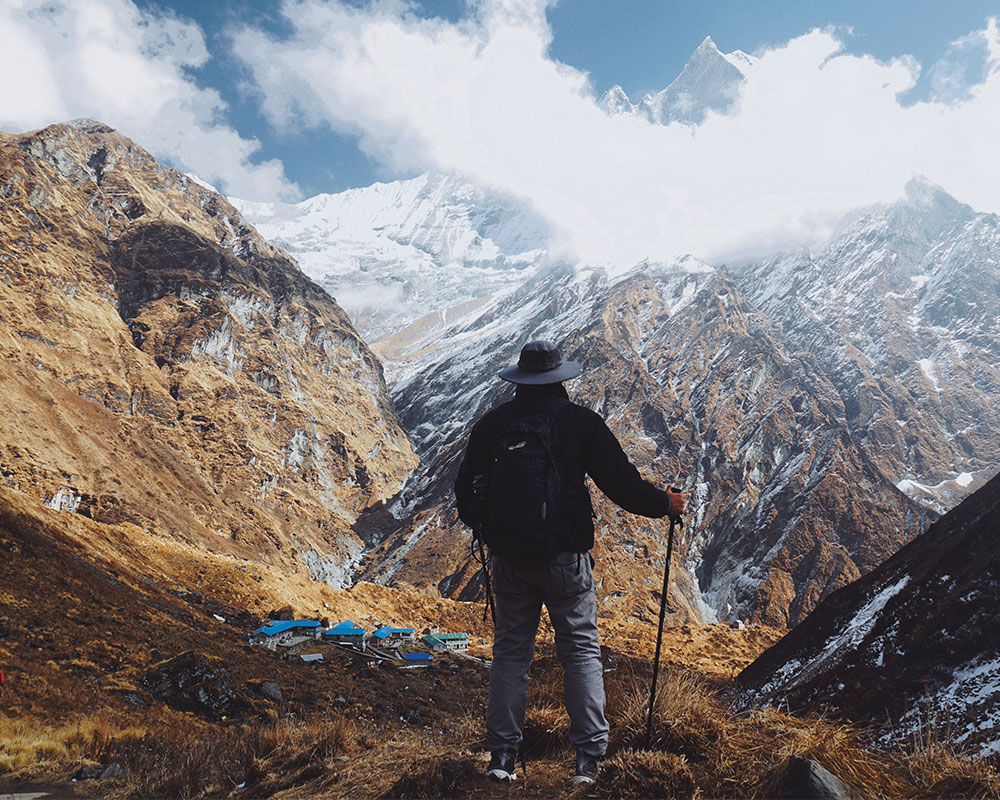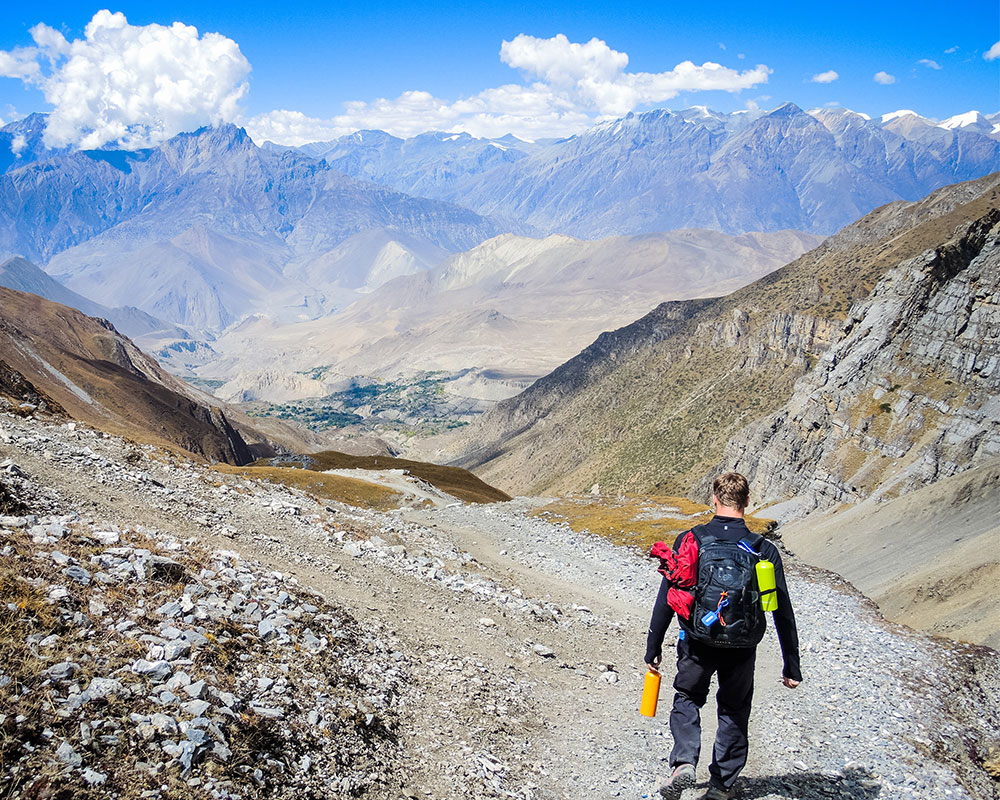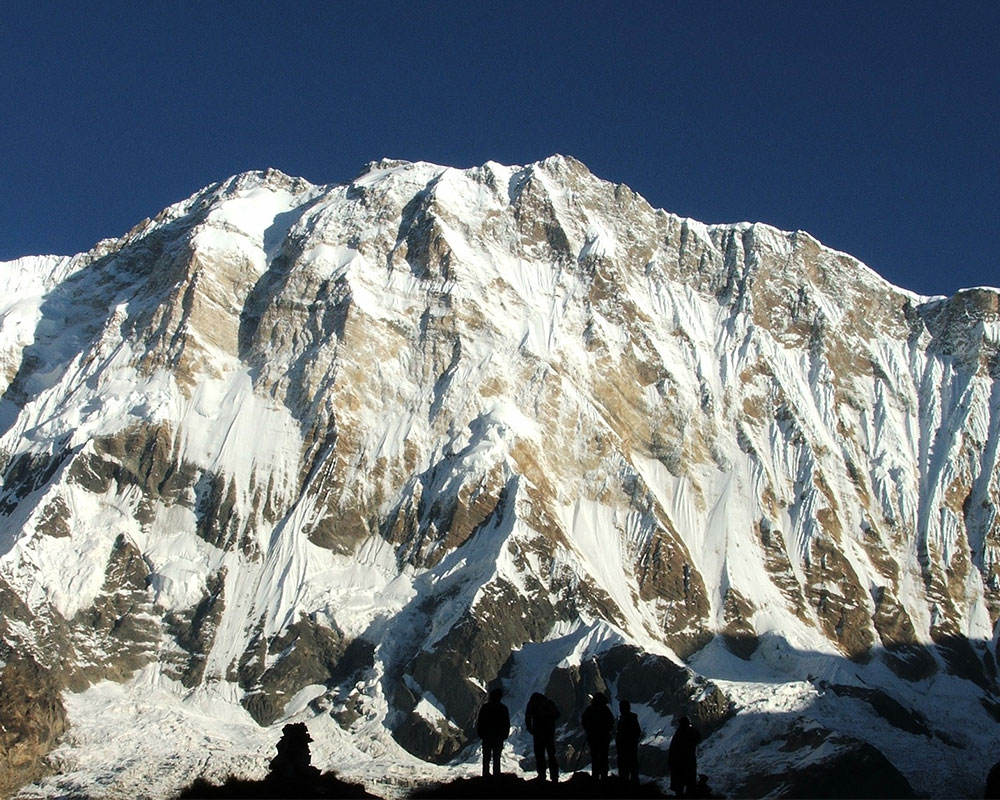Trip facts
Difficulty
Easy
Duration
15 Days
Activity
Trekking
Destination
Nepal
Max Altitude
2,850m
Trip Starts
Kathmandu
Trip Ends
Kathmandu
Trip At Glance
Brief Itinerary
ARRIVE KATHMANDU
SIGHTSEEING TOUR
DRIVE TO CHITWAN (177KM/4-5 HRS)
JUNGLE ACTIVITIES
DRIVE TO POKHARA (4-5 HRS)
TREK TO DHAMPUS (1750M/2-3 HRS)
TREK TO LANDRUK VILLAGE (1699m/5-6 hrs)
TREK TO GHANDRUK VILLAGE (1951m/3-4 hrs)
TREK TO BANTHANTI (2230m/3hrs)
Day 10 : TREK TO GOREPANI (2850m/4 hrs)
TREK TO POON HILL / TIRKEDUNGA (1525m/5 hrs)
TREK TO BIRETHANTI (1100m/1hrs) / DRIVE TO POKHARA
DRIVE BACK TO KATHMANDU CONTINUE TO NAGARKOT
DRIVE BACK TO KATHMANDU
DEPARTURE
Package Details
Cost Incldues
- 03 nights twin/double room accommodation as per the above Hotel in Kathmandu on BB basis.
- 02 nights twin/double room accommodation as per the above Hotel in Pokhara on BB basis.
- 06 nights / 07 days Annapurna Village Trek using Local Lodges en-route on full board basis including guide and porters as per the group strength.
- 02 nights / 03 days twin/double room accommodation as per the above hotel in Chitwan on full board basis including all jungle activities and national park entrance fees.
- 01 night twin/double room accommodation as per the above Hotel in Nagarkot on BB basis.
- Annapurna Conservation Area Project fees and Trekkers’ Information Managements System [TIMS].
- Necessary trek transfers as per the itinerary.
- Assisted upon arrival at the airport by our office representative.
- All arrival and departure transfers as per the itinerary by a/c vehicle.
- Surface transfers Kathmandu / Chitwan & Pokhara / Kathmandu / Nagarkot / Kathmandu with necessary vehicle retention.
- All applicable taxes presently 24.3%
Cost Excludes
- International Airfare and taxes.
- Any meals except on the trek and in Chitwan.
- Personal expenses.
- Any transportation cost outside of the regular itinerary.
- Any insurance.
Detailed Itinerary
Day 01
ARRIVE KATHMANDU
It is a panoramic thrill flying into Kathmandu on a clear day. The views of snow-capped mountain peaks sprawling down below you are almost ecstatic, beginning a whole chain of memorable experiences that stay with you for a long, long time. A representative and driver from Yeti Holidays will meet you at the airport and escort you to your designated hotel. The representative will help you check into hotel. At the hotel you will be briefed about your daily activities.
Check In and Overnight at Hotel.
Meals: None
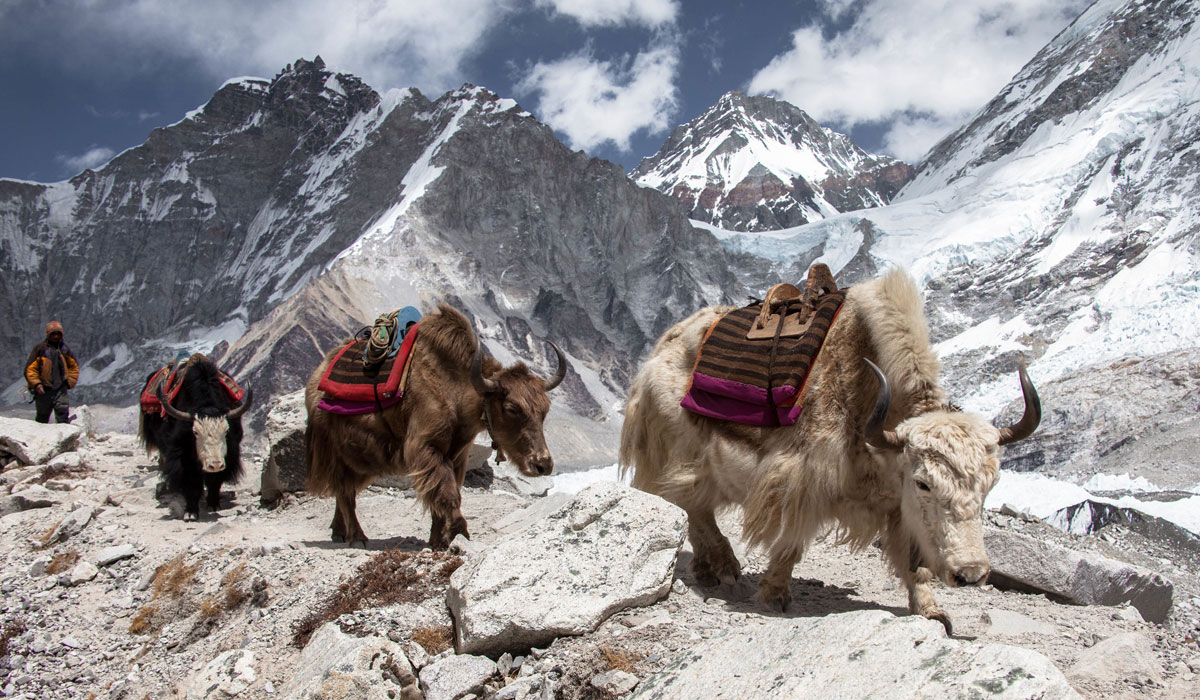
Day 02
SIGHTSEEING TOUR
After breakfast at the hotel, commence the sightseeing tour of Kathmandu city, Swayambhunath and Patan city.
KATHMANDU CITY: Kasthamandap, the source of the name Kathmandu means ‘made from the timber of a single tree’. Also known as Kantipur, the capital Kathmandu is the hub of Nepal's art and culture. It is a place for rest, relaxation and easy-day sightseeing of historic and artistic temples and monuments. Kathmandu Durbar Square with its arrays of temples, Seto Machhindranath and the ancient palace of the former Nepali Royals enriches your experience of the centuries old civilisation.
SWAYAMBHUNATH STUPA: Said to be around 2000 years old, this Buddhist Stupa sits atop a hill. The main stupa is composed of a solid hemisphere of brick and earth supporting a lofty conical spire crowned by a pinnacle of Copper gilt. Painted on the four sided base of the spire are the all seeing eyes of Lord Buddha. The hill of Swayambhunath is a mosaic of small Chaityas and Pagoda temples. You’ll get a scenic view of Kathmandu city from there.
PATAN CITY: Located about 5 km south of Kathmandu, Patan is one of 3 royal cities in the valley. A destination for connoisseurs of fine arts, Patan is filled with wood and stone carvings, metal statues, ornate architecture, including dozens of Buddhist and Hindu temples, and over 1200 monuments.
Patan is believed to have been built in the third century B.C. by the Kirat dynasty later expanded and enriched by the Licchavi and the Malla rulers in the medieval period. Patan Durbar Square, like its counterpart in Kathmandu, is an enchanting mélange of palace buildings, artistic courtyards and graceful pagoda temples. The former Royal palace complex is the centre of Patan’s religious and social life, and houses a beautiful museum.
Overnight at Hotel.
Meals: Breakfast

Day 03
DRIVE TO CHITWAN (177KM/4-5 HRS)
After breakfast at the hotel we drive to Chitwan National Park.
Arrival and check-into Lodge.
Chitwan National Park is a large and beautiful nature reserve occupying 932 sq. km. of land inhabitant of endangered royal Bengal tiger and the one-horned Indian rhino. Chitwan National Park was protected since the 19th century as a hunting reserve for Nepali royals and foreign aristocrats. In a famous hunting expedition, King George V and his son Edward VIII managed to slaughter 39 tigers and 18 rhinos in a single blood-soaked afternoon. Unfortunately, habitat loss and poachers continue to decimate the number of tigers and rhinos. Today, there are less than 80 tigers and 500 rhinos left in the Park. There are more than 50 species of mammals in Chitwan including monkeys, tigers, leopards, sloth bears, wild boar, hyenas, deer, elephants and rhinos. There are also 450 different species of birds and 67 species of butterflies. The main attraction of Chitwan is the Elephant Safari. It is a unique experience to explore the jungle on the back of a trained elephant. While you are not likely to see the Bengal tiger, you should be able to see the Indian rhino and enjoy one of the nicest nature reserves of the Indian sub-continent. Watch out for branches – particularly if you are sitting behind other passengers.
Elephant Safari and Visit to Observation Tower
Seated high on the back of an elephant, gain a unique viewpoint of the Chitwan jungle. As an experienced mahout tracks animals through the dense jungle growth as you sit back on a howdah, you can imagine yourself being a Rajah or Rani going on a shooting trip (with cameras of course!) in the days of yore. An elephant safari allows you to go places that would be impossible to get to by foot or Jeep and get up close to the wild animals of the jungle that are normally wary, but at home with a fellow creature of the jungle.
Spending some time on a nice observation tower in the jungle is another amazing experience. After an interesting jeep drive through different traditional villages to reach the tower.
Tharu dance
A melodious tribal dance performed by men and women with rhyme or drums and the clashing of sticks embodies and projects how to keep away the rhino and other wild animals from the human habitat and their farming land. You can enjoy your evening after dinner and watch the Tharu Stick Dance. We will arrange dance for your enjoyment adjacent to our Restaurant.
Overnight at Resort.
Meals: Breakfast, Lunch and Dinner.
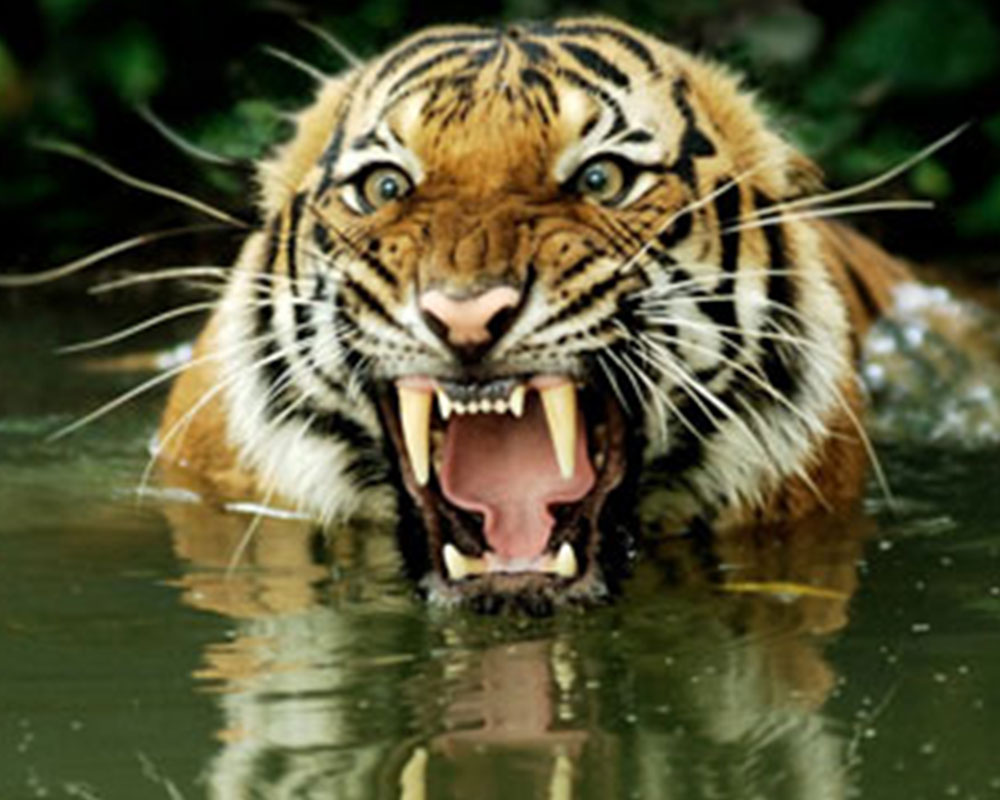
Day 04
JUNGLE ACTIVITIES
Wake up call. Morning tea/coffee
Bird watching
Chitwan is an ornithologist’s delight and a must for any serious twitchier, as more than 450 species of exotic birds such as the Oriental Pied Hornbill, Paradise Flycatcher, and Lesser Adjutant Stork congregate at this biological hotspot of Asia. Our experienced guides will take you to select spots ideal for birding, where you can observe a breathtaking diversity of these beautiful feathered creatures.
After having hearty breakfast at the resort commences the Dugout Canoe ride.
Dugout Canoe ride
Floating down to Rapti River by dugout canoe is the best way to discover the habitat of crocodiles on the bank of the river. It is also a relaxing and better way to watch the different kind of birds and wildlife species when they come to the bank of the river to drink water.
Elephant Breeding Center
Was established in 1985 at Royal Chitwan National Park (RCNP) and is the only EBC in Nepal. At the Elephant Breeding Program, 4km west of Sauraha, elephants are breed and trained. The best time to visit is in the afternoon when the elephants are fed. The Elephant Breeding Centre of Sauraha with great tourist attraction is said to be one of the only 3 such centers in the world.
Elephant skin is extremely sensitive to sunburn and insect bites; they roll in dust and mud and throw dust on their backs to help protect their skin. This was one of such moments when this restless young Elephant tried to get rid of insect.
Lunch at the resort.
Local school visit
Situated in the serene location of Chitwan district, SOS Hermann Gmeiner School Bharatpur was established in 2004, with more than five hundred students and 45 staff at present. Nursery to Grade Five were the classes introduced in the first year, however, in the span of three years, the year 2007 came up with full-fledged classes up to Grade Ten. The school first appeared in the SLC examination in 2008 and started higher secondary level in Science stream in the very year with 38 students. In a very short span of time, with the efforts of dedicated, devoted and determined teachers, the school achieved fabulous result in the SLC examination glorifying its name as the best and one of the most reputed schools in the district. It was also awarded 'The Best School' by the District Education Office, Chitwan due to its excellent SLC result in 2008.
Tharu village visit
Tharu are indigenous people of the Terai. They have a distinct architectural style, building solely of the natural materials found in the area; straw, wood and mud. Even though by now almost all Tharus are Hindus some elements of their tribal religion can still be found. The villages are often peaceful, non-industrial havens, with the inhabitants engaged in a yearly agricultural circle.
Drive back to lodge.
Overnight at Resort.
Meals: Breakfast, Lunch and Dinner.
Day 05
DRIVE TO POKHARA (4-5 HRS)
After breakfast at the lodge drive to Pokhara.
Pokhara is a remarkable place of natural beauty. At an elevation lower than that of Kathmandu, it has much more tropical feel to it; a fact well appreciated by the beautiful diverse flowers that prosper in this environment. The enchanting city with a population of around 95,000 has several beautiful lakes and offers stunning panaromic views of Himalayan peaks. The valleys surrounding Pokhara is home to thick forest, gushing rivers, emerald lakes and of course, the views of world famous Himalayas. The serenity of the lakes and the magnificence of the Himalayas rising behind them create an ambience of peace and magic.
Pokhara is the most popular destination for visitors to Nepal. The city is also known as the center of adventure. There is little in its past by way of neither history nor culture impact and the only important role that the old Pokhara played was that it was along the route of trade between India and Tibet. Today it is one of the fastest developing cities of Nepal, mainly due to tourism.
The natural beauty of its lakeside location and its proximity to the mountains has made it the natural choice for trekkers and adventures. Pokhara is also the base for some of most famous trekking circuits of Nepal. By itself surrounding area provides ample scope for short walk and day trips, suitable for children or weary trekkers, which can be made around the valley.
Evening boating at Lake Phewa.
Spend a quiet time boating in the ultimate lake where the reflections of Mount Annapurna and Macchapuchare range falls. You will also see a variety of fishes while boating. An island temple is located at the middle of the lake. Thick forest lies on the adjoining southern slopes of the lake. It’s hard to escape the draw of Phewa Lake and any visitor with even a few spare minutes should endeavour to take a boat out on the water to fully experience the wonderful views of the reflected mountains.
Overnight at Hotel.
Meals: Breakfast.
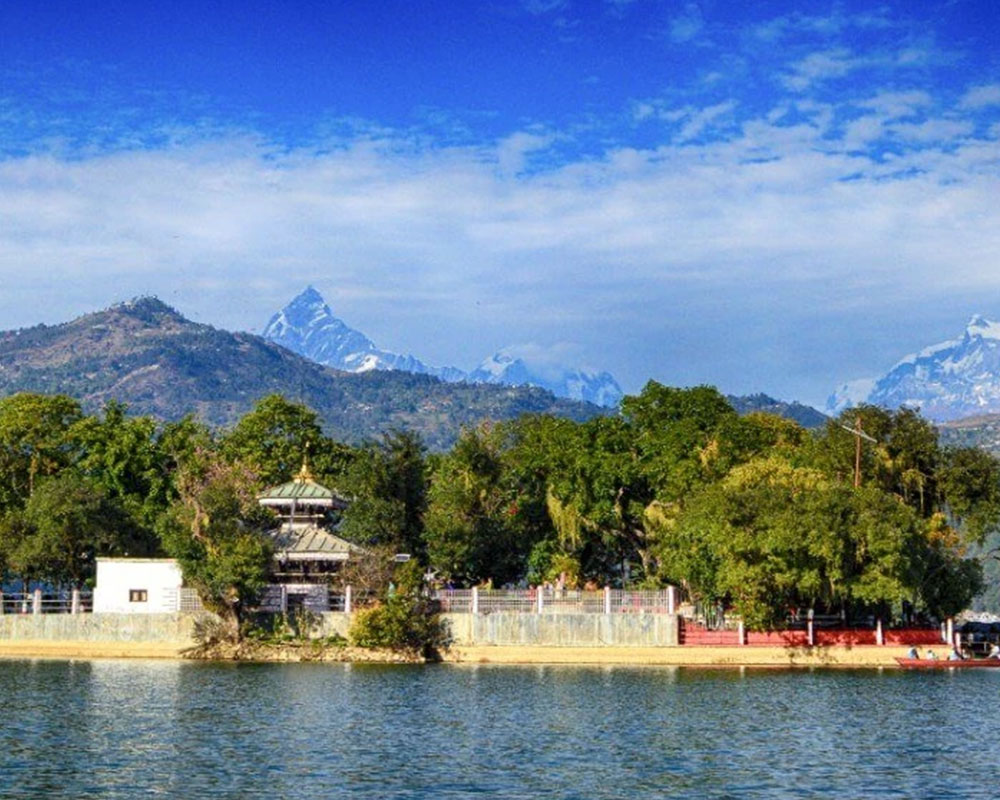
Day 06
TREK TO DHAMPUS (1750M/2-3 HRS)
After breakfast at the hotel drive to Phedi and start trek to Dhampus. Leave Pokhara and travel by road to Suikhet Phedi. From here, the trail ascends steeply through forest and later through paddy fields to the village of Damphus. The trek leads slowly downhill on even paths. There's no climbing and plenty of spots along the way to lie back in the grass. You'll also come across several traditional tea houses where the cheerful local women will beckon you to come over and try their tea. You'll arrive in Dhampus by late afternoon; this is the starting point for expeditions to the summit of Mount Everest. You'll spend the night in a basic lodge where you can have chance to meet the trekker who did Annapurna circuit trek, or you can just sit back with a mug of masala tea and enjoy the amazing view.
Overnight at Lodge.
Meals: Breakfast, Lunch and Dinner.
Day 07
TREK TO LANDRUK VILLAGE (1699m/5-6 hrs)
Today the trail goes along the ridge to Deurali. Descend through forest again for some time to the small villages of Tolka and Bheri Kharka. The trail then descends through scattered forests and villages to reach Landrung.
Overnight at Lodge.
Meals: Breakfast, Lunch and Dinner.
Day 08
TREK TO GHANDRUK VILLAGE (1951m/3-4 hrs)
The trail goes steeply down towards the river for an hour then there is a steep ascent for about 2-3 hours through scattered villages with beautiful views of the Himalayas. Eventually, reach Ghandrung, one of the largest Gurung settlements in Western Nepal. You can have good views of Gangapura, Machhapuchhre (Fishtail), Mount Annapurna and other snow-capped mountains. If time permits, visit the Annapurna Mountain Conservation Area Project (ACAP) headquarters, the local museum and the village.
Overnight at Lodge.
Meals: Breakfast, Lunch and Dinner.
Day 09
TREK TO BANTHANTI (2230m/3hrs)
We will leave Ghandruk and further walk through dense rhododendron forest to Tadapani which is an excellent view point to glimpse heavenly sight of Annapurna South, Hiunchuli and Fishtail. Today we will walk only for 3 hours until we reach Banthanti. It is a forest area with lots of streams and small pond of water. But the water is not as good for swimming as it is very cold!!!In the forest here you can see lots of Monkeys going from one tree to another and one rock to another. This area is comparatively warm and is ideal for these interesting creatures.
Overnight at Lodge.
Meals: Breakfast, Lunch and Dinner.
Day 10
Day 10 : TREK TO GOREPANI (2850m/4 hrs)
From Banthanti, you proceed further along steep trails. Nature spreads exotic sight of majestic snow-capped mountain peaks, lush vegetation and rich plant life before you. You climb through rhododendron forest to Deurali [3100m] and reach a hamlet and cultivated fields. Continue walking for 3 hours and finally you will find yourself in Ghorepani. Ghorepani also houses lodges to provide food and accommodation to travellers.
Overnight at Lodge.
Meals: Breakfast, Lunch and Dinner.
Day 11
TREK TO POON HILL / TIRKEDUNGA (1525m/5 hrs)
Early morning climb to Poon Hill (3150m) to see the panoramic views of Annapurna, Dhaulagiri, Lamjung Himalayan ranges as well as sunrise over the Himalayas. Experiencing the great views of Himalayan panorama from Poon Hill, we descend Tirkedunga.
Overnight at Lodge.
Meals: Breakfast, Lunch and Dinner.
Day 12
TREK TO BIRETHANTI (1100m/1hrs) / DRIVE TO POKHARA
After breakfast, the trip continues with an hour long trek to reach the nearest road. The drive to Pokhara takes about two hours. Upon arrival in Pokhara, the rest of the day is leisure.
Evening sightseeing tour of...
Devi's fall: Locally known as Patale Chhango (Hell's fall), Devi's fall is an amazing waterfall lying about 2 km south-west of Pokhara airport on the highway to Tansen. It was named after Devi, a Swiss lady who was swept away when the floodgates were accidently opened, never to be seen again.
Seti River Gorge: Carved by Seti River, the gorge is one of the natural wonders of Pokhara. Ki Singh Bridge at Bagar, Mahendra Bridge & Prithivi Highway Bridge near Bus Park provides a perfect view of the deep river gorge with turbulent rush of milk like water.
Tibetan Villages: Tibetan Villages, Tashiling in the south and Tashil Palkhel in the north of Pokhara Valley are the two Tibetan villages that are inhabited by the Tibetan people who keep themselves busy by producing and trading woollen carpets and other handicrafts.
Overnight at Hotel.
Meals: Breakfast.
Day 13
DRIVE BACK TO KATHMANDU CONTINUE TO NAGARKOT
After breakfast at the hotel drive back to Kathmandu continue to Nagarkot.
NAGARKOT: Nagarkot is a village located about 32 kilometres east of Kathmandu on the north-eastern rim at an elevation close to 6,800 feet above sea level. Nagarkot is famous as one of the most scenic spots in the region, renowned for its sunrise and sunset views of the Himalayas. Visitors often travel to Nagarkot from Kathmandu to spend the night so that they can be there for the breathtaking sunrise view. It also offers an excellent view of the Indrawati river valley to the east. With a panoramic view of the Valley, it is described by visitors as a place whose beauty endures year round. If luck favours, you can even spot Mount Everest out with its snow-topped peaks on a very clear day from an observation tower at the very top of the village’s hills.
Check in & Overnight at Hotel.
Meals: Breakfast.
Day 14
DRIVE BACK TO KATHMANDU
Nagarkot has become famous as one of the best spots to view Mount Everest as well as other snow-topped peaks of the Himalayan range of eastern Nepal. It also offers an excellent view of the Indrawati river valley to the east. With an elevation of 2,195 meters, Nagarkot also offers a panoramic view of the Valley and is described by visitors as a place whose beauty endures year round.
Breakfast at the lodge we drive back to Kathmandu.
Optional - Evening visit Thamel: Thamel is the epi-center for shopping in Kathmandu. It can be a stressful place because of the street vendors, rickshaw drivers and high speed motorbikes. But there is no question that it is jam- packed with shops, selling everything from ready-to-wear Western clothes, embroider T-shirts, Tibetan carpets, clothing, Thangkas (Buddhist paintings) and curios (“singing bowls” etc), Pashmina shawls, Nepali souvenirs like khukuris (Gurkha’s traditional knife) and madals (drums), jewellery, paper products (the local lokta plant is used to make a fine & unique paper – a nice and practical souvenir or gift), colorful masks and puppets, metalwork & woodcarvings.
Overnight at Hotel.
Meals: Breakfast.
Day 15
DEPARTURE
We ensure that you will leave Kathmandu with cherishing memory and an experience of a lifetime. Our representative from Yeti Holidays will drive you to the airport in time for your flight back home.
Meals: Breakfast.
Similar Trips
-

Trekking
-
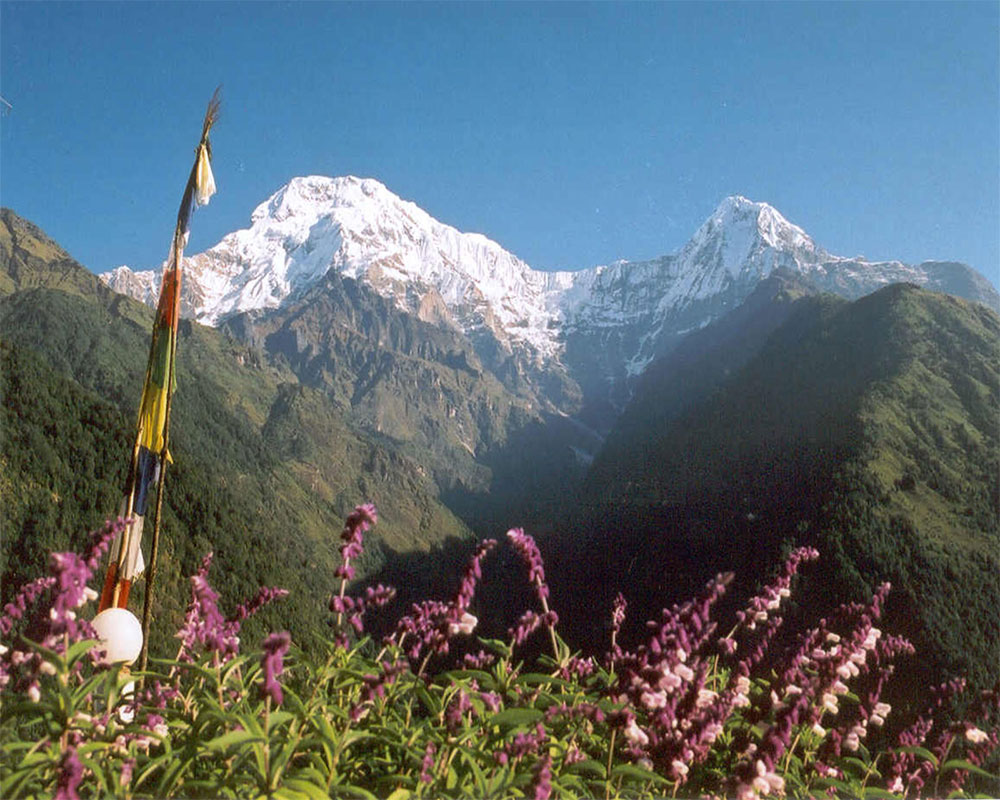
Trekking
-
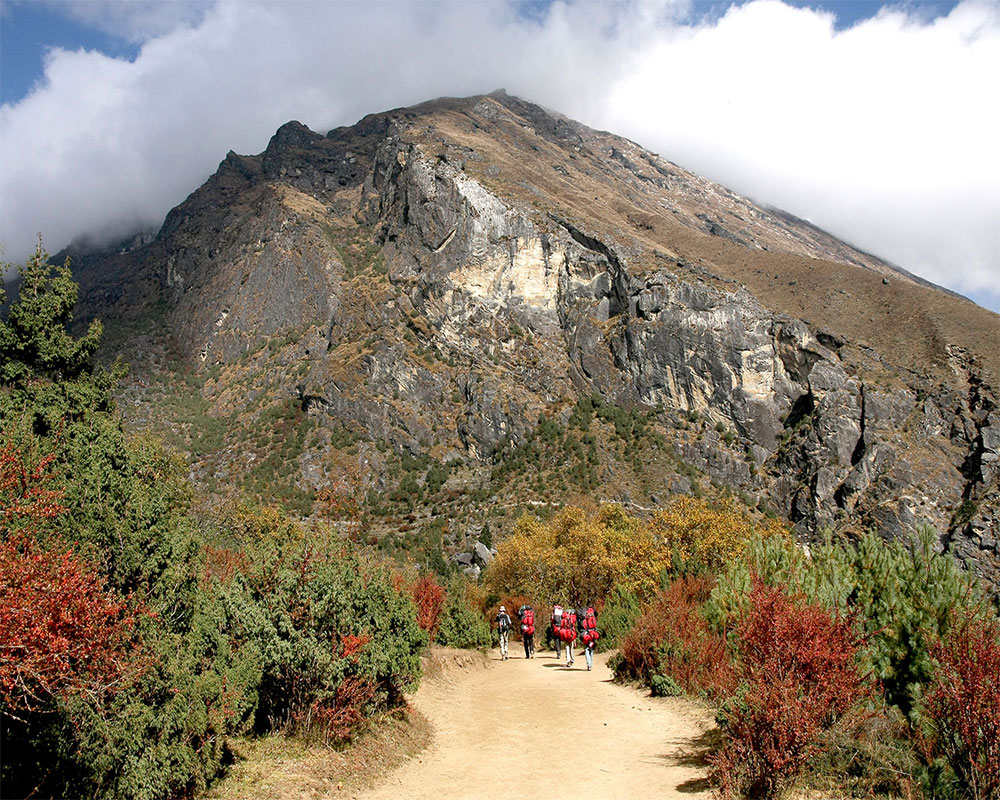
Trekking
-
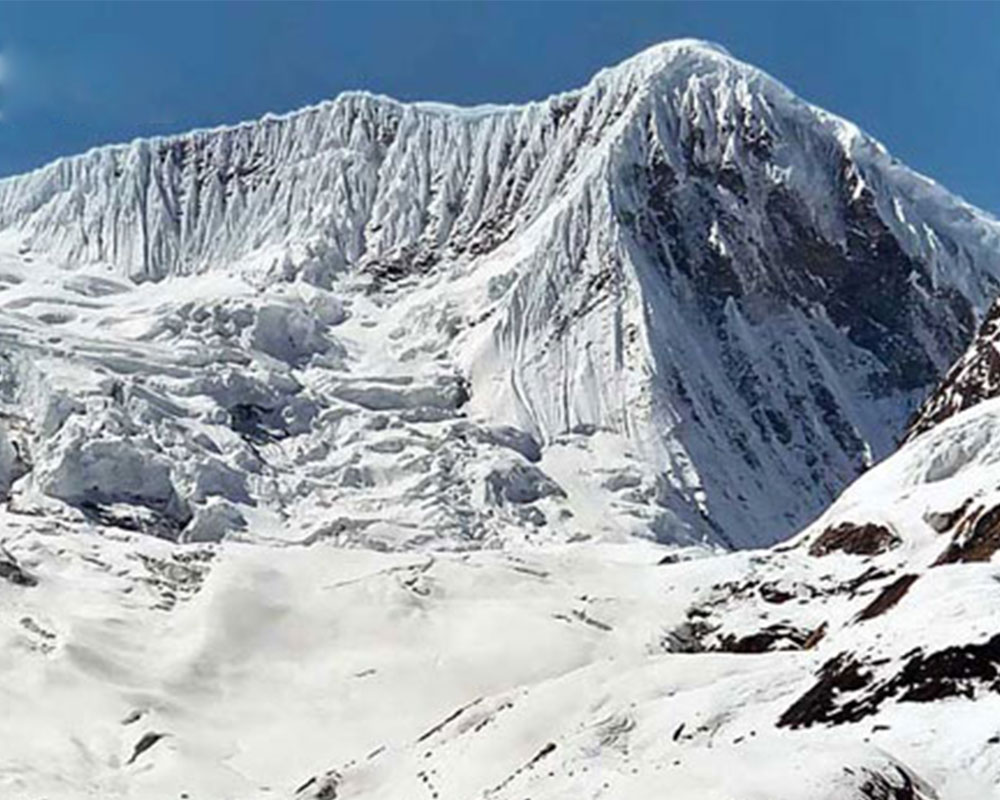
Trekking
-
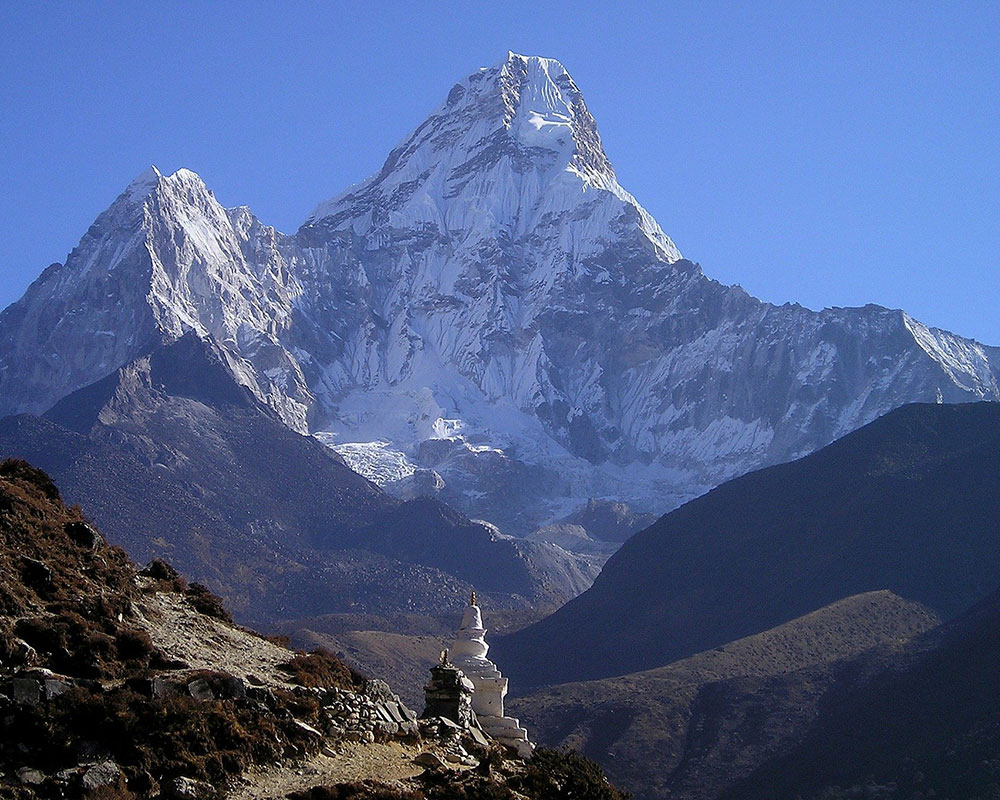
Trekking
A Week Below Everest with Chitwan and Pokhara

Duration
16 Days

Altitude
3,864m

Difficulty
Easy
Trip Details -
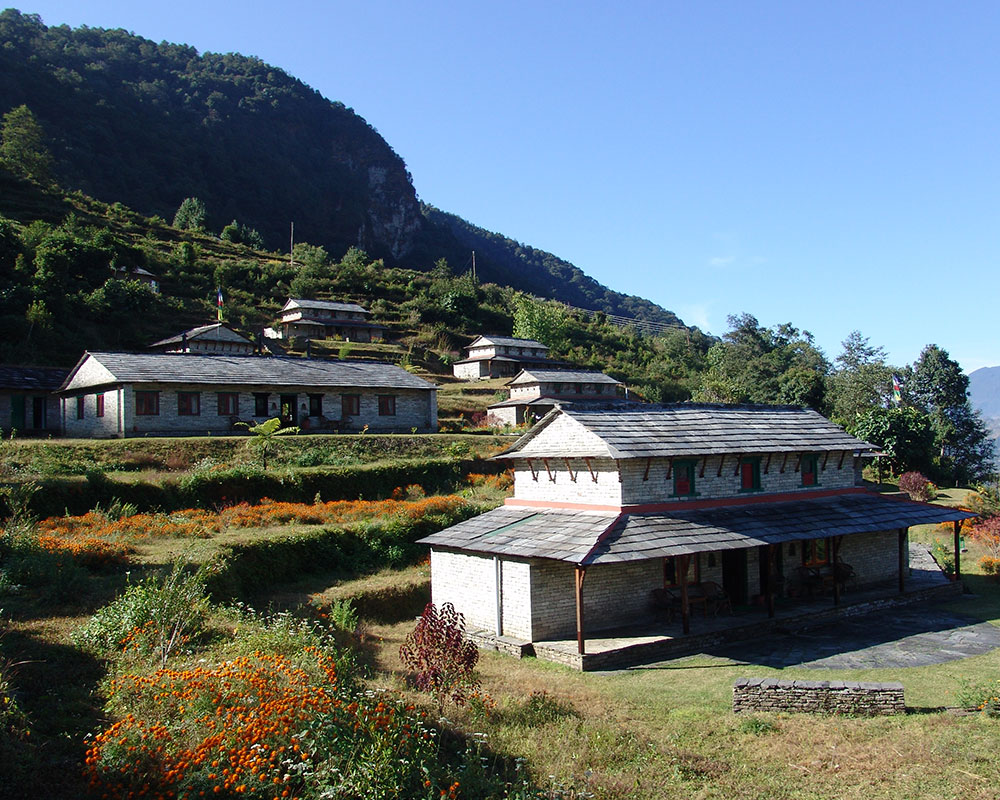
Trekking
Birethanti Trek with Pokhara & Chitwan

Duration
11 Days

Altitude
2,012m

Difficulty
Easy
Trip Details -
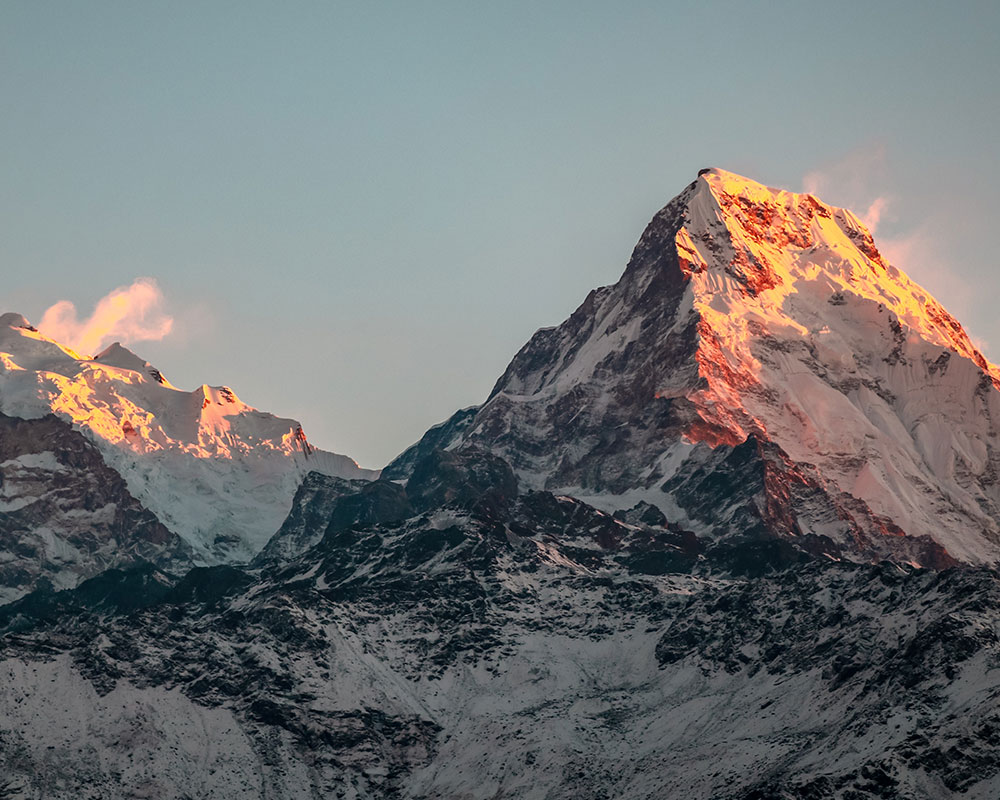
Trekking
Annapurna Base Camp 12 Nights & 13 Days

Duration
13 Days

Altitude
4,130m

Difficulty
Easy
Trip Details

Ring Road, Kathmandu , Nepal
Email: This email address is being protected from spambots. You need JavaScript enabled to view it.
Phone: +977 1 4561252
Website by Curves n’ Colors
Travel By Interest
Associated with


